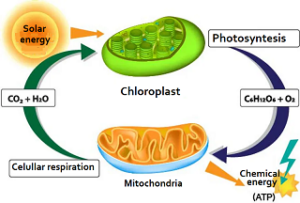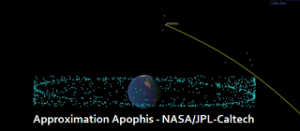
Arquivo para March, 2021
The first aortic mutation
How exactly life originated is still speculation, one of the most  elaborate theories was made by Lynn Margulis (1938-2011) Carl Sagan’s first wife, he is famous for the Cosmos series, her theory called Endosymbiosis.
elaborate theories was made by Lynn Margulis (1938-2011) Carl Sagan’s first wife, he is famous for the Cosmos series, her theory called Endosymbiosis.
In this theory the mitochondria and chloroplasts become organelles in a cell, the first by chemical energy and the second by photosynthesis, although the theory has never been proven in the laboratory is interesting, Teilhard Chardin called them “chain of carbon molecules” (The phenomenon human) and ATP (adenosine triphosphate) energy-carrying molecule in living beings, there are other theories of course.
Fundamentalists on duty stay calm, also in the Genesis of the Bible is that God made man out of clay and then blew him in the nostrils, so life also appeared at a certain moment (Genesis 2,7), and the previous text says that “but a steam was rising from the earth to water the whole earth ”(Gn 2,6), that steam could well be CO2.
We may never know exactly how this happened, but it is certain that Earth and Nature came before living organisms and certainly after them (or most of them) man appeared, but the aortic mutation did not stop there.
Genetic mutations, although rare can happen, they can cause new genes to appear in a given population, by natural adaptation mechanisms, if certain characteristics are favorable to survival and reproduction in a certain environment, therefore if the environment changes, the mutations can become stable in the new environment.
The land has undergone several environmental changes, and perhaps what we are going through is the one that most deeply affects the stability of the environment, birds and animals have been extinct and forests and natural environments have been devastated, so it is to be expected that some mutation will occur, but it will be the environment is the first to change and react, so natural phenomena can occur.
This takes many years to occur, but suddenly they break in a chain of mutations, as Teilhard Chardin describes it: “the irresistible developments that are hidden in the most sluggish slowness, – the extreme agitation that is hidden under a veil of rest, – the entirely new that insinuates itself within the monotonous repetition of the same things ”(Chardin, 1965, p. 8).
In times of pandemic risks, looking at the universe of cosmogenesis we live in is essential.
CHARDIN, T. (1965). O fenômeno humano (Human Phonomenon) BR, São Paulo : Herder.
Time of change in the cosmic sphere
A time of real change is always a time when nature and life itself  are transformed creating a deeper cosmogenesis that also develops in consciousness, we have already reached Mars with our apparatuses and we are approaching Venus in the cosmos, in earthly life already we know how the dinosaurs became extinct and in fact it was a meteor, studies of the cosmos are advancing.
are transformed creating a deeper cosmogenesis that also develops in consciousness, we have already reached Mars with our apparatuses and we are approaching Venus in the cosmos, in earthly life already we know how the dinosaurs became extinct and in fact it was a meteor, studies of the cosmos are advancing.
This is because life is linked to consciousness, and in phenomenology it is always awareness of something, but it is not separate from the metaphysics in which the very conception of Being, Nature and Cosmos evolve, also in the spiritual aspect.
One of the theologians who never separated spiritual evolution from the evolution of the “species” was Teilhard Chardin (here we use an Aristotelian-Darwinian term not to confuse, but to explain), for him, however, following the path of Patrística (the wise saints at the beginning church) and Scholastics (Tomás de Aquino, Santo Anselmo and now the recovered and saint Duns Scotus), what happens is the complexification of Nature in its hominization (The Human Phenomenon).
Here we begin the explanation of what we call an aortic mutation, which can happen on a new scale at this present moment, not because of the virus but because of the universe but of Nature (capitalized here to make it also sacred), affirms Chardin in the nascent young land : “In the most solid rocks, it is possible to distinguish, in vague symmetry with the metamorphosis of living beings, a perpetual transformation of mineral species” (Chardin, 1965, p. 51), this at first led him to be condemned as “ pantheistic ”, but a more attentive reading, he explains the process.
The pre-life was immersed (we could say already in a germ) in the atom, but where there is already life, we find a spectrum of chemical elements in which its elements are differentiated (the chemical term for this is polymerization, formation of macromolecules by the union from the simpler ones), this pre-life “over the abyss of the past, let’s observe its color, which is changing. From age to age, the tone revives. Something will break out on Earth, no longer nascent, but youthful: life! This is Life! ” (Chardin, 1965, p. 58), the Earth would have remained quite cold so that the chains of carbonaceous molecules (organic molecule) could form and survive on its surface.
The Earth was then watery and tiny beings begin to form here and there, and an amazing mass of organized matter appears the last (or rather the penultimate) layer in the order of time, of the envelopes of our planet: the Biosphere (Chardin , 1965, p. 63).]
This evolution from the inorganic to the organic is the mutation called Aorganic, and it will continue, one day it will be able to change the face of the planet and this is part of human evolution as well.
The dangers of change exist, not only because of a virus that forces human nature to adapt, but an asteroid (the cause pointed out by the extinction of the dinosaurs) can reach us, the dreaded asteroid Apophis (photo), formed by a gigantic rock exists and is being observed by astronomers, its dreaded approach will be in 2029, of course it is not expected to reach us.
Chardin, T. (1965). O fenômeno humano. BR, São Paulo : Herder. (Human Phenomenon)
Good news, bad and post-pandemic trauma
The good news is that the pandemic is decreasing worldwide, the bad thing is that in Brazil at least 7 states with a worse worsening than the data from 2020, it is worrying, but what is already beginning to be thought is what will come next, our worldview has changed and we need to take a new path.
bad thing is that in Brazil at least 7 states with a worse worsening than the data from 2020, it is worrying, but what is already beginning to be thought is what will come next, our worldview has changed and we need to take a new path.
These are events that happen individually when we have a serious accident, a rupture in personal relationships, or something that creates trauma, according to David Trickey, a psychiatrist and member of the UK Trauma Council, the trauma rupture is a “construction of meaning” .
The psychiatrist explains: “the way you see yourself, the way you see the world and the way you see other people” are shaken by the turn of an event, a gap in your “guidance system” and a simple everyday stress turns into trauma if they are mediated by strong and prolonged feelings of helplessness and apprehension.
It will be necessary to look at people’s mental health, to extend our limit of tolerance and attention, it is at this moment that intolerances and practices of latent or simply little pessimism
What is this guidance and meaning system about, we all have a kind of “personal GPS”, connected to work, human fulfillment and their needs, in short self-esteem and the relationship with others, we dealt with the subject in the past week.
Mental resilience is a kind of balm that moves our cognitive machine and makes us move on from stress and if it gets close to exhaustion it creates a psychic trauma, as serious as a physical trauma.
Remembering the lessons of this pandemic crisis and building new meanings is more difficult than just being “optimistic”, but the penultimate great epidemic of the Spanish crisis has shown that it has been forgotten and the lessons we could learn have not been learned.
Martin Bayly, a social scientist at the London School of Economics (LSE), quoted in a BBC report, went to revisit files on Spanish flu in the UK where 250,000 people died, and could not find any evidence of public homage, he said in the report “The absence of memorials made it disappear from public memory, when writing history”.
This affects our preparedness for future crises, when the 1957 pandemic occurred (the Asian flu killed one million people), several analysts pointed out, according to Bayly’s report, “we completely failed to learn the lessons of 1918”, but also the moral lesson why we were in the middle of war.
Creating a meaning from a social narrative would be an important step, highlights the report, and one of the efforts in the United Kingdom will be to remember the NHS (National Health Service) in the Brazilian case the SUS (Unified Health System), in addition to this thinking about memories and other ways of remembering and recounting this crisis will be alert and preparation for the future.

